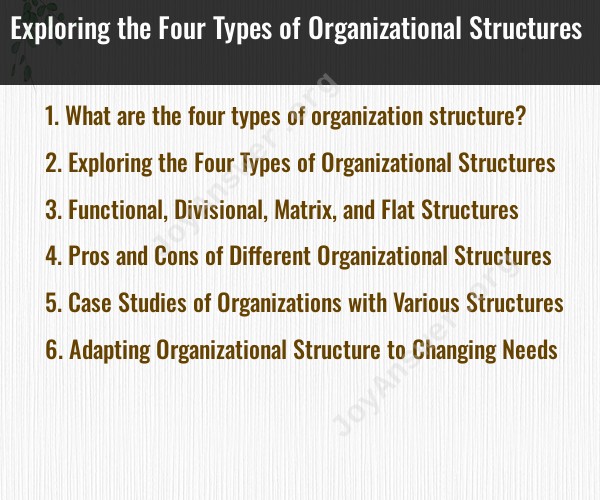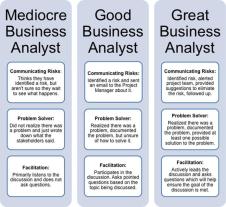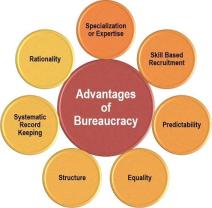What are the four types of organization structure?
Organizational structures define how an organization is arranged in terms of hierarchy, authority, and the relationships between different parts of the organization. There are several types of organizational structures, but four of the most common ones are:
Functional Organizational Structure:
- In a functional structure, the organization is divided into functional departments or units based on the nature of their work or expertise. Common departments include marketing, finance, human resources, and operations. This structure is hierarchical, with employees reporting to department heads or managers.
- Pros: Specialization and expertise in functional areas, clear reporting lines, and efficient resource allocation.
- Cons: Limited communication between departments, potential for silos, and slower decision-making.
Divisional Organizational Structure:
- In a divisional structure, the organization is organized into separate divisions or business units, each responsible for a specific product line, geographic region, customer group, or project. Each division may have its own functional departments, and they operate semi-independently.
- Pros: Greater focus on specific markets or products, quicker decision-making within divisions, and adaptability to diverse markets.
- Cons: Potential for duplication of functions, coordination challenges between divisions, and lack of synergy across the organization.
Matrix Organizational Structure:
- A matrix structure combines elements of both functional and divisional structures. Employees report to both a functional manager and a project or divisional manager. This structure is often used in organizations with complex projects or diverse products.
- Pros: Enhanced flexibility and responsiveness, efficient resource allocation, and the ability to leverage expertise from multiple areas.
- Cons: Potential for power struggles and conflicts, complex reporting relationships, and the need for strong communication and coordination.
Flat Organizational Structure:
- In a flat structure, there are very few or no levels of middle management between top executives and the rest of the organization. This structure promotes open communication, faster decision-making, and a more collaborative work environment.
- Pros: Streamlined communication, quicker decision-making, and a focus on employee empowerment and involvement.
- Cons: Limited career advancement opportunities, potential for overburdening top management, and challenges in managing larger organizations.
These are four of the most common organizational structures, but organizations can also adopt hybrid structures or design custom structures that suit their specific needs and goals. The choice of organizational structure depends on factors such as the organization's size, industry, goals, and culture. It's important for an organization to select the structure that aligns with its strategic objectives and facilitates efficient operations.
Exploring the Four Types of Organizational Structures
Organizational structure is the framework that defines how tasks, responsibilities, and authority are allocated within an organization. It determines how information flows, how decisions are made, and how people work together to achieve organizational goals.
There are four main types of organizational structures:
Functional Structure: In a functional structure, departments are organized based on specialized functions, such as finance, marketing, and human resources. This structure promotes efficiency and expertise within each functional area.
Divisional Structure: In a divisional structure, the organization is divided into semi-autonomous units based on product, service, customer, or geographic region. This structure allows for decentralized decision-making and adaptability to local market conditions.
Matrix Structure: In a matrix structure, employees report to two or more managers, creating a cross-functional network of authority. This structure facilitates collaboration and communication across different functional areas.
Flat Structure: In a flat structure, there are few or no levels of management, and employees have more autonomy and decision-making power. This structure encourages innovation and flexibility but may lack coordination and control.
Functional, Divisional, Matrix, and Flat Structures
Functional Structure:
Pros:
Promotes efficiency and expertise within each functional area.
Clear lines of authority and responsibility.
Suitable for organizations with a narrow product or service range.
Cons:
May hinder communication and collaboration across departments.
Delays in decision-making due to centralized authority.
May not adapt well to changing market conditions.
Divisional Structure:
Pros:
Allows for decentralized decision-making and adaptability to local market conditions.
Encourages focus on specific products, services, or customer segments.
Facilitates faster response to market changes.
Cons:
Can lead to duplication of resources and functions across divisions.
May create internal competition between divisions.
Requires strong coordination and communication between divisions.
Matrix Structure:
Pros:
Facilitates collaboration and communication across different functional areas.
Encourages innovation and project-based work.
Suitable for organizations with complex products or services.
Cons:
Can lead to confusion and conflict due to dual reporting lines.
Requires strong leadership and communication skills to manage the matrix.
May not be suitable for organizations with a strong hierarchical culture.
Flat Structure:
Pros:
Encourages innovation and flexibility.
Empowers employees and increases their decision-making power.
Reduces bureaucracy and administrative costs.
Cons:
May lack coordination and control due to few or no management levels.
Requires a high level of employee self-discipline and motivation.
May not be suitable for large or complex organizations.
Case Studies of Organizations with Various Structures
Functional Structure:
McDonald's: A fast-food chain with a functional structure that emphasizes operational efficiency and standardization.
General Motors: A multinational automotive company with a functional structure that separates engineering, manufacturing, and marketing functions.
Divisional Structure:
Procter & Gamble: A consumer goods company with divisions organized by product categories, such as beauty, grooming, and healthcare.
Nestlé: A global food and beverage company with divisions organized by geographic regions, such as Europe, Asia, and the Americas.
Matrix Structure:
Boeing: An aerospace and defense company with a matrix structure that combines functional and project-based teams.
Electronic Arts: A video game publisher with a matrix structure that balances functional expertise with project-specific requirements.
Flat Structure:
Valve Corporation: A video game developer with a flat structure that emphasizes employee autonomy and collaboration.
Haier: A Chinese multinational consumer electronics company with a flat structure that empowers local teams to make decisions.
Adapting Organizational Structure to Changing Needs
Organizations should regularly evaluate their organizational structure to ensure it aligns with their current and future needs. As external factors such as market conditions, technology, and customer demands change, organizations may need to adapt their structure to remain competitive and effective.
Factors to consider when evaluating and adapting organizational structure include:
Organizational goals and strategy: The structure should support the achievement of organizational goals and align with the overall business strategy.
Size and complexity of the organization: As organizations grow in size and complexity, the structure may need to adapt to manage increased responsibilities and decision-making.
Nature of the industry and products/services: The structure should be appropriate for the industry and the types of products or services offered.
Employee skills and capabilities: The structure should leverage the skills and expertise of the workforce and foster a collaborative work environment.
Technological advancements: The structure should accommodate the use of technology and facilitate efficient communication and information sharing.
By carefully assessing these factors











